Guitar Capo
/in Guitar News/by KarneyCapos: A Musician’s Best Friend
A guitar capo is a small, versatile devices that can be used to transpose the key of a song without having to learn new chord shapes. They are essential tools for any guitarist, whether you are a beginner or a seasoned professional. There are many different types of capos on the market, each with its own unique features and benefits. Here is a quick overview of some of the most popular types.
Adjustable Screw Capos
My personal favorite is the Shubb Capo-The Shubb capo is known for its exceptional quality and durability. They feature an over-center locking mechanism that provides secure clamping and prevents string buzz, ensuring your playing remains in perfect tune. Shubb capos are also known for their comfortable grip, making them a joy to use even during extended playing sessions.
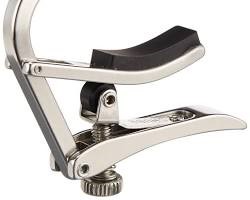
Shubb Capo
Trigger Capos
Trigger capos-These capos are the most common type, and they are easy to use and affordable. They work by clamping onto the neck of the guitar at a specific fret, and they can be quickly and easily adjusted with the squeeze of a trigger.
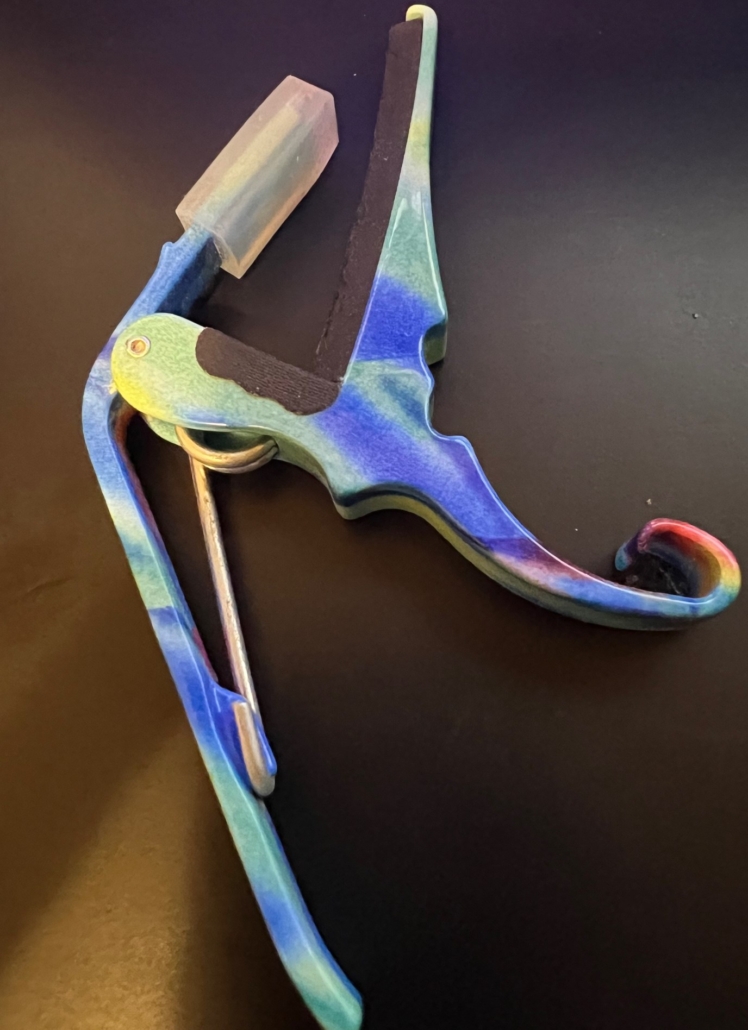
A Kyser Trigger Capo-
Spring-loaded Guitar Capo
These capos use a spring-loaded mechanism to clamp onto the neck of the guitar. This makes them very easy to use, and they are also very secure. However, they can be more expensive than trigger capos.
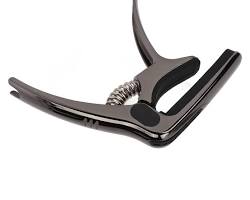
Spring Capo
Guitar Capo Costs
The cost of a capo can vary depending on the brand, quality, and features. A basic capo will typically cost around $10-$20, while a more high-end capo can cost upwards of $50 or even $100.
Here are some factors that can affect the price of a capo:
- Brand: Some brands, such as Kyser, Shubb, and Dunlop, are more popular and well-respected than others. This can drive up the price of their capos.
- Quality: Capos made from higher-quality materials, such as steel or aluminum, will typically cost more than capos made from cheaper materials, such as plastic.
- Features: Some capos have additional features, such as built-in tuners or quick-release mechanisms. These features can add to the cost of the capo.
If you are a beginner guitarist, you may not need to spend a lot of money on a capo. A basic capo will do just fine for most purposes. However, if you are a more serious guitarist, you may want to invest in a more expensive capo that is made from higher-quality materials and has additional features.
Pros and Cons of Guitar Capos
- Trigger capos are an excellent choice for beginners and casual players who value ease of use and affordability. However, they may not be the best option for guitars with curved necks, as they can sometimes struggle to provide a consistent clamping force.
- Spring-loaded capos are very easy to use and secure. However, they can be more expensive than trigger capos.
- Shubb capos, on the other hand, excel in their precision and reliability. They are particularly well-suited for guitars with curved necks, providing even clamping and consistent tuning. However, their higher price point may deter some budget-conscious musicians.
Overall, the best type of capo for you will depend on your individual needs and preferences. If you are a beginner, I would recommend a trigger capo. If you are a more experienced guitarist, you may want to consider a Shubb capo.
No matter which type of capo you choose, make sure that it is made from high-quality materials and that it fits your guitar properly. A good capo will last for many years and will help you to make great music.
In addition to the types of capos mentioned above, there are also a number of specialized capos available. These capos can be used to achieve specific effects, such as capoing individual strings or creating a bottleneck sound.
I hope this blog has helped you to learn more about the different types of capos available. If you have any questions, please feel free to leave a comment.
Thanks for reading!
30-Minute or 60-Minute Lessons?
/in Guitar News/by Karney30 Minutes or 60 Minutes? Choosing the Right Lesson Length
As a budding musician, you’ve probably pondered the age-old question: should I opt for 30-minute or 60-minute lessons? While there’s no one-size-fits-all answer, understanding the pros and cons of each duration can help you make an informed decision that aligns with your learning style and goals.
30-Minute Lessons: The Focused Approach
If you’re a beginner or have a busy schedule, 30-minute lessons can be a great way to fit music into your life without feeling overwhelmed. These shorter sessions allow you to focus on specific skills or techniques without getting bogged down in too much information. Additionally, 30 minutes may be more manageable for younger students who have shorter attention spans.
Benefits of 30-Minute Lessons:
- Concise and focused: Ideal for beginners or those with limited time
- Bite-Sized Learning: The shorter duration prevents information overload, allowing you to grasp concepts more effectively
- Structured and efficient: Allows you to cover specific topics without feeling overwhelmed
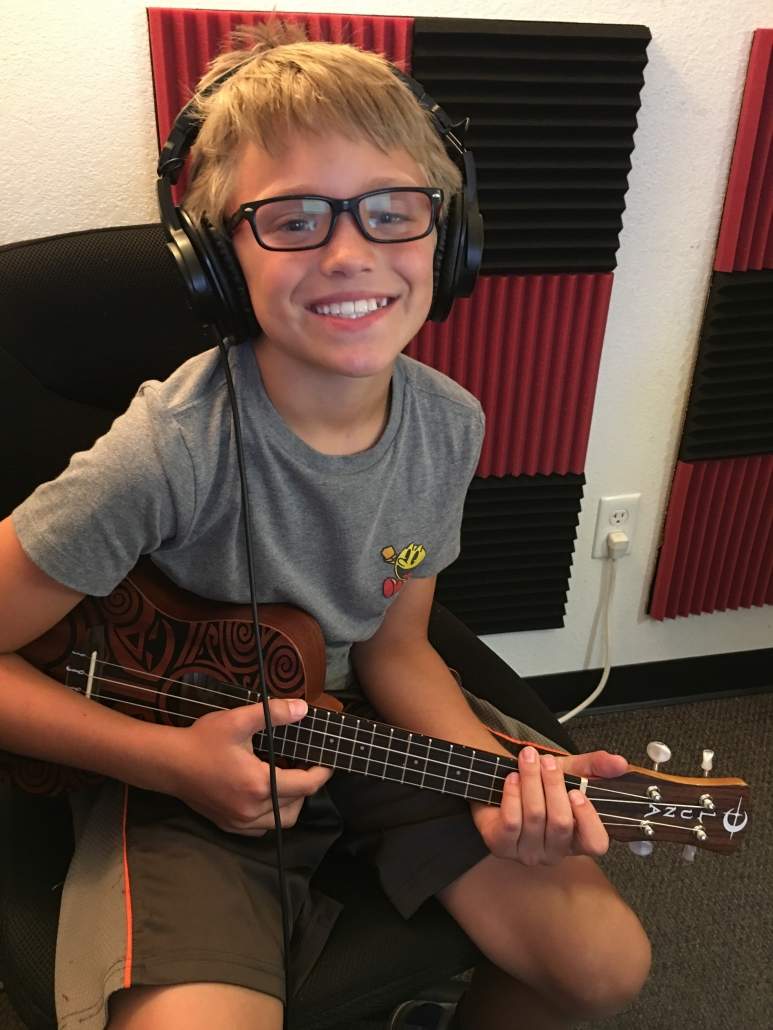
Tommy taking ukulele lessons
60-Minute Lessons: Deep Dive into Musicality
For more experienced students or those seeking a more comprehensive learning experience, 60-minute lessons offer a deeper dive into the musical world. With more time, you can explore various aspects of your instrument, practice new techniques, and receive more personalized feedback from your instructor.

Brae taking drum lessons
Benefits of 60-Minute Lessons:
- Comprehensive learning: Allows you to cover more material and delve deeper into techniques
- More personalized feedback: Instructor can provide more in-depth guidance and address specific challenges
- Opportunity to explore different musical concepts: Time for improvisation, theory, or repertoire exploration
- Room for Practice: Longer lessons provide more time for in-lesson practice, allowing you to apply new techniques and solidify your understanding
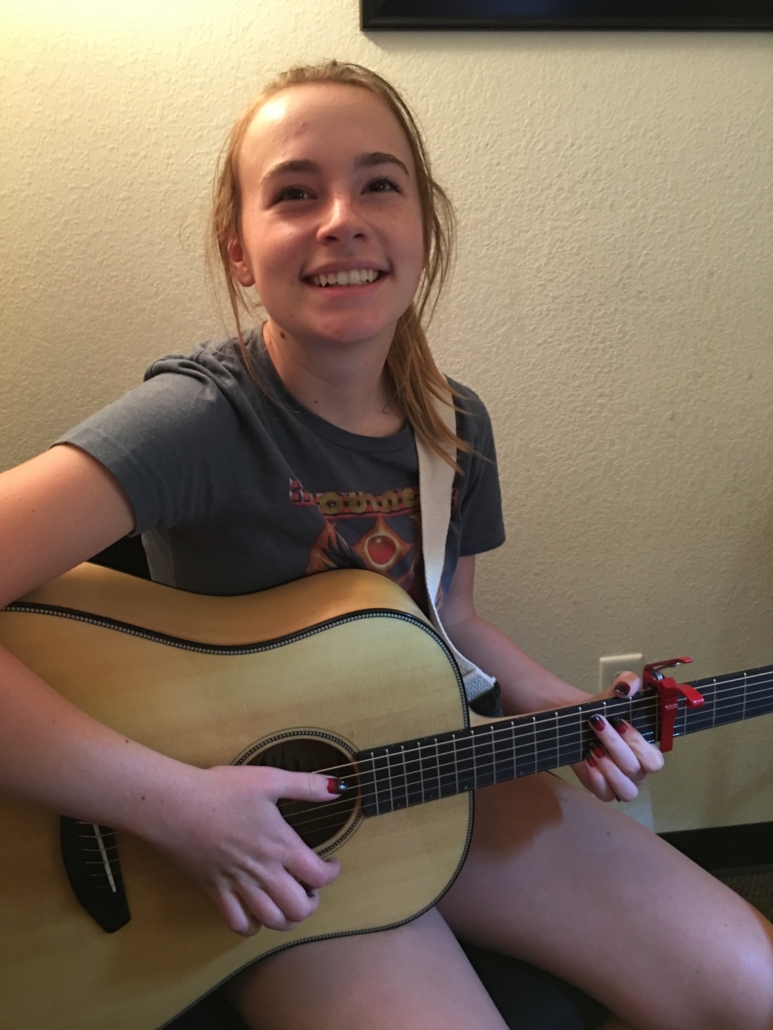
Cadie in studio taking guitar lessons
Considerations for Choosing the Right Lesson Length:
- Learning style: Do you prefer shorter, focused sessions or longer, more comprehensive lessons?
- Skill level: Beginners may benefit from shorter sessions, while experienced students may prefer longer ones.
- Schedule and availability: Consider your time commitments and the availability of your instructor.
Ultimately, the best lesson length for you depends on your individual needs and preferences. Communicate with your instructor to find the duration that suits your learning style and helps you achieve your musical goals.
If you have any questions or comments about lessons, please contact me.

